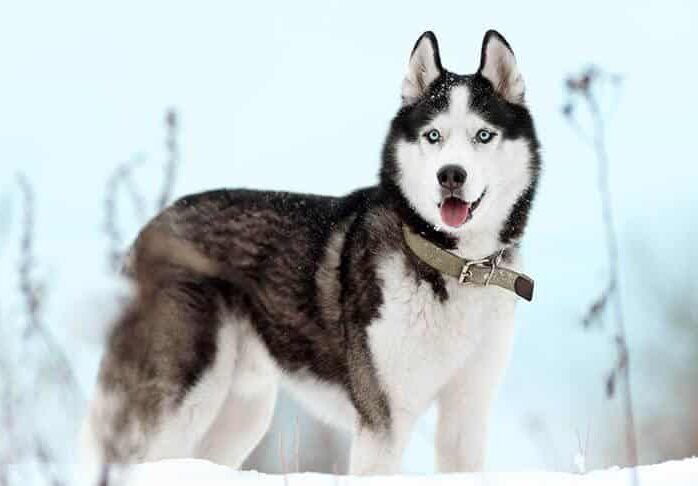Interview with Elizabeth Muthard, Working Group AKC Judge
Where do I live? How many years in dogs? How many years as an AKC judge?
Elizabeth Muthard: I live in Lake Wales, Florida. I have been in dogs (not counting as a child) since the late 1960s; judging over 25 years.
What is my original breed? What is/was my kennel name?
Elizabeth Muthard: I grew up with Poodles. As an adult, my original breed was the Siberian Husky, but I have also bred Otterhounds, Labrador Retrievers, and Old English Sheepdogs, and I co-bred one litter of Standard Poodles.
Have I judged any Working Breed/Group Specialties?
Elizabeth Muthard: Yes.
Are there specific qualities I admire most in the Working Breeds?
Elizabeth Muthard: Of course! The purpose of Working Breeds is to help mankind. How can that not be important? And the standards for each breed that we judge emphasize the hallmarks of that breed.
How important are the breed hallmarks in the Working Breeds? Can I offer a few examples?
Elizabeth Muthard: Each breed is unique and its breed hallmarks must be considered when judging. The Siberian Husky’s free spirit and independence is part of that breed’s history and are important to their earlier survival. The guardian breed’s quiet assessment and acceptance of your presence is part of their makeup as well.
Each breed has its unique best purpose that comes through even after generations of having a life of luxury as our companions. The guardian breeds naturally protect their families. The Siberian still likes to run. These are what make each breed different, even though they are all dogs.
Can I speak to the general presentation of the Working Breeds in my ring today?
Elizabeth Muthard: The general presentation seems to be appropriate in most cases. Exceptions are untrained dogs and exhibitors who aren’t in control of their charges. Tackling a Working Dog to the ground to see its bite shouldn’t be the case.
All dogs, not just Working Dogs, should be trained to have a judge touch them, and especially to have their mouths examined when teeth have to be counted. Again, not just Working Dogs but in a lot of breeds, the handlers need to slow down. Racing madly around the ring doesn’t usually result in the best movement.
Important are the characteristics in the breed’s development that have been preserved through the years. The Siberian Husky’s independent, free-spirited nature, important to them, is different from those breeds whose purpose is a guardian or those that were bred to be working, all-around farm dogs that still retain their natural protectiveness of home and family. There are physical and functional characteristics important to each breed.
Do I have any thoughts/opinions on dividing the Working Group in two?
Elizabeth Muthard: I have a lot of thoughts, but no definite opinion. If you start by dividing the Working Group, where do you stop? What about the Sporting Group, the Hound Group, the Terrier Group? And how would you split up all the Toys? At some shows we’re lucky to have six in a Group. Others have almost full Groups. Judges should be able to easily handle the Groups as they are.
When I started judging, there were quite a few breeds where the classes had more than 30 dogs. With so many more breeds, breed entries are lower, but, at times, you end up with sizeable Groups. At times, you end up with small Groups. Then there’s the additional expense of more ribbons, more prizes, and more expenditure for the same number of entries. This is a consideration for many clubs that are trying to stay “in the black.” Don’t know if there’s a “right” answer, but there’s no easy one.
What advice would I offer newer judges of the Working Breeds?
Elizabeth Muthard: Learn as much as you can before beginning to judge ANY breed. Remember the purpose of each breed and reward the characteristics of that breed. Don’t put yourself in a bad position when examining Working Breeds; remember, they are guardians and naturally protective of their people.
If you’re fearful (and some judges are), they will know it. And with most, don’t put your face in the face of a guardian breed—as I’ve seen too many do. They don’t want you to “koochy koo” them; they’ll probably think you’re crazy. They only tolerate your being in their world. If you don’t like the breed, don’t judge it… goes for any breed.
Which Working Breeds provide the greatest challenge to judges? To exhibitors?
Elizabeth Muthard: Untrained dogs shown by inexperienced exhibitors are a concern when judging Working Breeds. A judge should feel that the dog is under control, and when the person can’t get the dog to do anything (to stand still at least) especially with the breeds with strong guard instincts, it becomes a challenge.
If I could share my life with only one Working Breed, which would it be and why?
Elizabeth Muthard: Although I’ve lived with and love the independent side of the Siberian Husky, I also admire the protective instinct of many of the Working Breeds. There’s a lot to appreciate about most Working Breeds and I could see myself with several of them. (Can’t say for sure till you live with them!)
If I could share my life with only one dog, which dog would it be and why?
Elizabeth Muthard: Today, we do share our life with just one dog, a Border Terrier who is perfect for our current lifestyle with a small yard and neighbors close by.
Just for laughs, do I have a funny story that I can share about my experiences judging the Working Group?
Elizabeth Muthard: Can’t beat Charlie’s story below about the Mastiff taking a snooze in the middle of judging, so I won’t even try.








